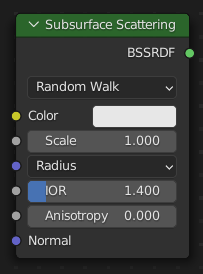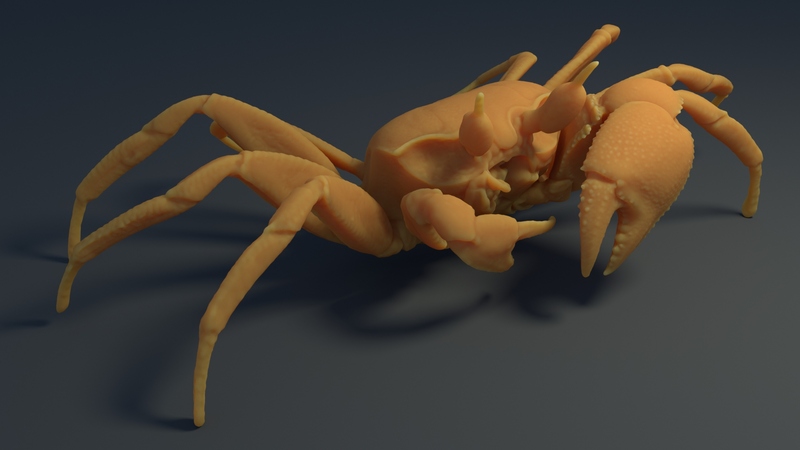Subsurface Scattering

The Subsurface Scattering node is used to add simple subsurface multiple scattering, for materials such as skin, wax, marble, milk and others. For these materials, rather than light being reflect directly off the surface, it will penetrate the surface and bounce around internally before getting absorbed or leaving the surface at a nearby point.
How far the color scatters on average can be configured per RGB color channel. For example, for skin, red colors scatter further, which gives distinctive red-colored shadows, and a soft appearance.
Inputs
- Color
Color of the surface, or physically speaking, the probability that light is reflected for each wavelength.
- Scale
Global scale factor for the scattering radius.
- Radius
Average distance that light scatters below the surface. Higher radius gives a softer appearance, as light bleeds into shadows and through the object. The scattering distance is specified separately for the RGB channels, to render materials such as skin where red light scatters deeper. The X, Y and Z values are mapped to the R, G and B values, respectively.
- IOR Cycles Only
Index of refraction for Subsurface Scattering.
- Anisotropy Cycles Only
Controls the directionality of subsurface scattering.
- Normal
Normal used for shading; if nothing is connected the default shading normal is used.
Properties
- Subsurface Method
Rendering method to simulate subsurface scattering.
ملاحظة
Eevee does use not support the Random Walk methods.
- Christensen-Burley
An approximation to physically-based volume scattering. This method is less accurate than Random Walk however, in some situations this method will resolve noise faster.
- Random Walk (Fixed Radius)
Provides accurate results for thin and curved objects. Random Walk uses true volumetric scattering inside the mesh, which means that it works best for closed meshes. Overlapping faces and holes in the mesh can cause problems.
- Random Walk
Behaves similarly to Random Walk (Fixed Radius) but modulates the Radius based on the Color, Anisotropy, and IOR. This method thereby attempts to retain greater surface detail and color than Random Walk (Fixed Radius).
Outputs
- BSSRDF
BSSRDF shader output.
Examples

Random walk subsurface scattering.